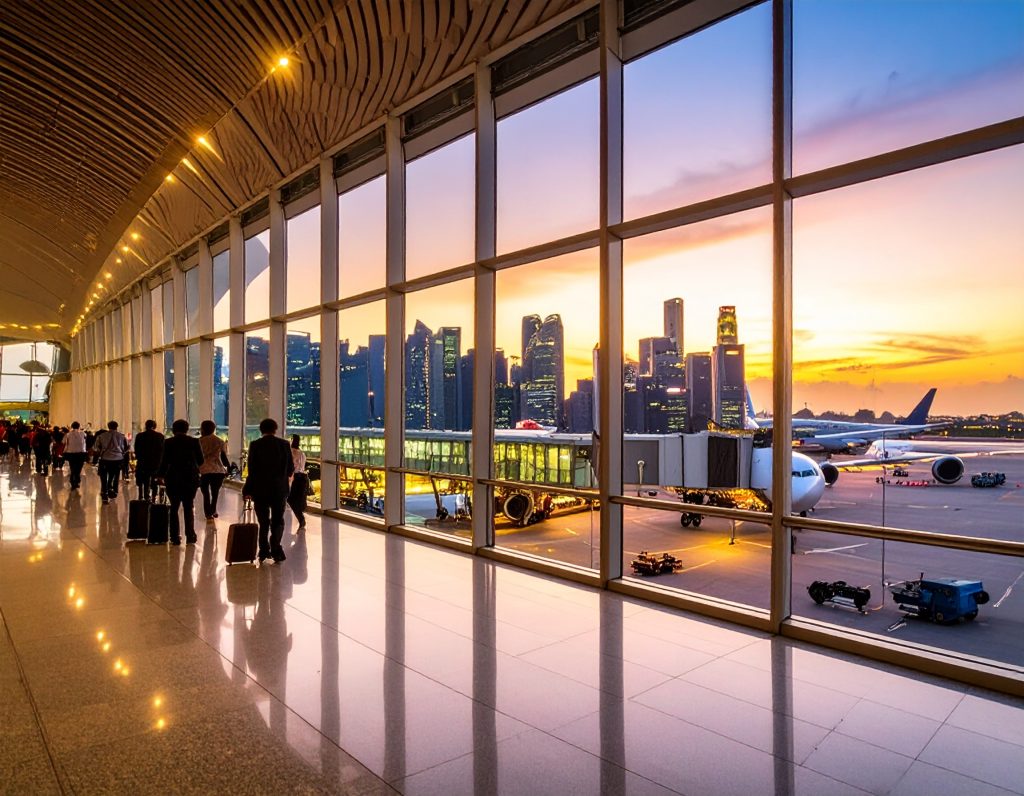Singapore’s Changi Airport has taken a major leap forward in its ambitious expansion plans by awarding a S$999 million contract to build underground tunnels that will connect the future Terminal 5 (T5) with existing terminals. This ground breaking infrastructure move is not just about concrete and cables—it’s about reimagining the passenger experience and future-proofing one of the world’s top airports.
As a frequent traveler myself, and someone deeply fascinated by smart airport development, I believe this is not just exciting news for aviation enthusiasts, but also for every international flyer who values seamless, fast, and connected journeys.
Major Construction Awarded to Koh Brothers and Penta-Ocean
The joint venture between Koh Brothers Building & Civil Engineering Contractor (Singapore) and Penta-Ocean Construction (Japan) has secured the nearly billion-dollar deal. The underground tunnel system will cover around 2.5 kilometers, designed to support two major operations:
- An Automated People Mover (APM): This will allow passengers to travel quickly between T2 and the future T5—similar to Changi’s current Skytrain, but much more advanced.
- An Integrated Baggage Handling System: Behind the scenes, checked-in luggage will be whisked from terminal to terminal without congesting public zones.
This project forms a crucial part of the larger Changi East Development, a long-term masterplan to expand Singapore’s airport capacity and maintain its world-class reputation.
Why These Tunnels Matter: More Than Just Engineering
On the surface, it may sound like a regular construction update. But this contract is vital to the long-term traveler experience at Changi.
Terminal 5, which is being developed on reclaimed land at Changi East, is physically separated from the existing terminals. Rather than relying solely on buses or elevated rail, these underground tunnels will ensure fast, protected movement of both people and luggage—even during heavy rain, runway activity, or tight layovers.
As a travel blogger focused on layovers, airport experiences, and luxury flight connectivity, I see this as a brilliant step toward effortless multi-terminal transfers. Imagine landing in T5 and reaching T2 in minutes, without needing to re-check your bags or take a shuttle. This is the future.
Timeline and What’s Next
According to Reuters, this latest contract is part of a series of developments leading up to the full-scale construction of Terminal 5, which officially began in May 2025. The tunnels are expected to be completed by October 2028, paving the way for the terminal to be fully operational by the mid-2030s.
Earlier, in 2023, Shanghai Tunnel Engineering Co. was awarded a S$622 million contract for another part of the underground infrastructure, including ground strengthening and earthworks.
With passenger traffic projected to double in the Asia-Pacific region by 2043, T5 will accommodate up to 50 million passengers annually—more than the capacity of Changi’s T1 and T3 combined.
Designed with the Future in Mind
What impressed me most was how T5 is being built with lessons from the COVID-19 pandemic in mind. The design is modular, meaning sections of the terminal can open or close independently in case of health emergencies.
Moreover, T5 will feature:
- Smart ventilation systems to improve air quality,
- Contactless check-in and security features,
- Energy-efficient systems aligned with Singapore’s sustainability goals.
In other words, it’s not just about capacity, it’s about being resilient and traveller centric.
Seamless Connections Beyond Air Travel
As someone always hunting for smooth layover experiences, I’m thrilled to note that the T5 development includes:
- A direct MRT station as part of the Cross Island Line (CRL),
- Possible ferry links via Tanah Merah Ferry Terminal,
- Enhanced bus and road connectivity to other parts of Singapore.
This multi-modal approach is exactly what a 21st-century airport need. It shows how Changi is not only expanding but also integrating various forms of travel for a better passenger journey.
What This Means for Travelers Like You and Me
In a few years, travelers transiting through Changi can expect:
- Lightning-fast movement between terminals—even during short layovers,
- Shorter baggage waits times, and
- A smoother, more enjoyable airport experience overall.
This matters whether you’re flying for business, heading to Bali via Singapore, or simply making the most of a long layover.
I personally love Changi for its gardens, sleeping pods, and lounges—but the future T5 and these new tunnels may take it to a whole new level of convenience.
Final Thoughts
At travellayover.com, I focus on curating content that enhances the airport and layover experience. This kind of forward-thinking infrastructure news truly matters. It reminds us that world-class airports aren’t built overnight—they’re thoughtfully crafted, brick by brick, tunnel by tunnel.
With the awarding of this S$999 million tunnel contract, Changi Airport isn’t just building another terminal. It’s building a gateway for the next generation of travelers.
If you love exploring airports and planning your flights as much as I do, stay tuned for more travel news and updates right here on TravelLayover.com.
Source
Original reporting by The Straits Times – “Changi Airport Group awards $999m contract for underground tunnels at Terminal 5”
Published on: June 10, 2025
You may also like:
- Bangkok Suvarnabhumi Airport (BKK) – Full Traveler’s Guide
- Airport Survival Guide: What to Do During a Layover
- Ultimate Travel Checklist & Tips: Your Complete Guide for Stress-Free Vacations
Disclaimer
The information provided in this article is based on public sources including The Straits Times and Reuters. While every effort has been made to ensure accuracy at the time of publishing, TravelLayover.com does not assume responsibility for any errors or changes. Readers are encouraged to consult official Changi Airport sources for the most up-to-date developments. Disclaimer: Some outbound links may be affiliated, but at no extra cost to you. This helps support the running of TravelLayover.com and enables more genuine travel content.
